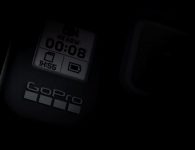
The iPad began life with an identity crisis. Sandwiched between the iPhone and laptops, it was neither one thing nor the other. In the end, detractors jibed it was “like a big iPhone”. But the first iPad nonetheless sold in the millions. People loved it – because it was like a big iPhone.
Since then, the iPad ecosystem has expanded in a big way. Today, you can choose between several distinct models that cater for a wide range of people. The focus continues to be the touchscreen, but the iPad now has full mouse and cursor support, too. And all the other things that made Apple’s tablet exciting in the first place – its inviting ‘blank canvas’; portability; fantastic hardware add-ons; an unparalleled app ecosystem; a sense of ambition – remain.
Whether you’re looking for a laptop replacement, a mobile creative powerhouse, or a tablet for surfing the web and binge-watching the entire Netflix catalogue, this guide will outline which iPad’s the right fit for you.
What’s the best iPad in 2020?
The Apple iPad Pro 11in (from £769) gets our vote as the best iPad you can buy. It’s powerful, packed full of cutting-edge tech, has the best accessories, and hits that sweet spot of being a superb tablet and a solid laptop replacement. If you need a larger canvas – and have suitably sturdy arms – the bigger, weightier, even more iPad Proier 12.9in model (from £969) is similarly impressive.
View the iPad Pro 11in from £769 on Apple
The best budget iPad is the 7th-generation iPad (from £349). Set next to its siblings, you can spot the compromises; but it nonetheless steamrollers anything else at this price-point, and is capable of running even the most advanced iPad apps. However, if you’re happy with a (much) smaller form factor, consider the more powerful iPad mini (£399) for an extra 50 quid.
View the iPad from £349 on Apple
Deciding on the best iPad for most people is tricky, but we’re going for the iPad Air (from £479). For an extra £130 over the iPad, you get double the storage, a better display and more powerful innards. This represents great value.
View the iPad Air from £479 on Apple
WIRED Recommends is your definitive guide to the best technology. Read our best gadgets guide for our top picks in all the categories we’ve tested.
Apple iPad Pro 11in
WIRED Recommends: A first-rate tablet and productivity tool, the iPad Pro 11in is close to iPad perfection
Screen: 11in (2388×1668 at 264ppi) | Chip: A12Z Bionic | Storage: 128GB/256GB/512GB/1TB | Cameras: 12MP Wide ƒ/1.8 aperture + 10MP Ultra Wide ƒ/2.4 aperture; front 7MP TrueDepth | Connectivity: USB-C | Size and weight: 247.6×178.5×5.9mm; 471g (Wi-Fi) or 473g (Wi-Fi + Cellular)
Apple finally fulfilled the original iPad’s ‘blank canvas’ promise with 2018’s iPad Pro. Apple’s confidence shone through with a design that had no distractions on its front face. This was minimal, beautiful tech: a screen surrounded by a thin black bezel. You felt the device could become anything.
2020’s follow-up was less groundbreaking – mostly a spec bump – but the iPad Pro (from £769) remains king of tablets. It’s powerful, with an A12Z Bionic chip that blazes through anything you throw at it, from Photoshop documents to 4K video edits. The display is stunning: bright, with superb colours and silky smooth 120Hz ProMotion tech that ruins you for displays that dare limit themselves to 60Hz.
Audio is fantastic – rare in a tablet. But four speakers provide a stereo image however you hold this iPad – no more watching telly in landscape with the soundtrack blaring from one side! It’s almost enough to forgive the lack of a headphone port. In fact, there’s only one port here: a solitary USB-C. Still, that beats Lightning and means the iPad Pro can instantly connect to multi-port hubs, pro-grade cameras, external drives and displays. (We do wish Apple would more fully support external screens, though. Connect to a swanky 4K LG and you’ll see black bars left and right of mirrored iPad content.)
What else? Face ID is fast. The camera’s solid. LiDAR makes you actually want to use AR. The form factor is big enough for creative fare, wide enough for typing with a keyboard attached via the new Smart Connector, and the perfect weight and size in the hand as a tablet.
Bad bits? Some elements of iPadOS need work, and the iPad Pro is wallet-thumpingly expensive. Still, if you can afford it, this is the best tablet you can buy. If not, steer clear, because the iPad Pro will ruin you for other tablets forever.
Add this: You can use Bluetooth mice and trackpads with all iPads; but if you draw or markup PDFs, buy a second-generation Apple Pencil (£119). A superior scribbling stick, it magnetically snaps to the iPad to charge, has double-tap tool-switching, and a flat edge for grip – and staying put on your desk.
Pros: Versatile and powerful; superb screen and speakers; unparalleled design
Cons: Room for improvement in iPadOS
Price: From £769 | Check price on Amazon | Apple | John Lewis
Apple iPad Pro 12.9in
The ‘pro’ iPad that gives you more room to work
Screen: 12.9in (2732×2048 resolution at 264ppi) | Chip: A12Z Bionic | Storage: 128GB/256GB/512GB/1TB | Cameras: 12MP Wide ƒ/1.8 aperture + 10MP Ultra Wide ƒ/2.4 aperture; front 7MP TrueDepth | Connectivity: USB-C | Size and weight: 280.6×214.9×5.9mm; 641g (Wi-Fi) or 643g (Wi-Fi + Cellular)
In the old days, the rule with displays was to buy the largest you could afford. That’s fine if it sits on your desk, but a problem when you’re lugging around a massive laptop because you wanted a few extra inches. Added heft is even more of a concern when holding a device in your hand. Hence: the awkward balancing act of the 12.9in iPad Pro (from £969).
Specs-wise, this largest of iPads matches the 11in model. The main difference is it’s bigger. That can be a good thing. The extra screen width means you get three-pane views in full-screen (versus two on the 11in) and two full-size iPad apps side-by-side in Split View (rather than something closer to single-pane iPhone app views). When being creative, those extra acres are particularly beneficial, whether cutting video, mixing music, sketching, or tapping out a best-seller on a Magic Keyboard.
The snag is the tablet bit. Although entertainingly weighing a smidgeon less than 2010’s original iPad, the extra 170g over the 11in is noticeable, and Face ID can fail in portrait when you’re curled up on the sofa with the iPad balanced and tilted on your knees because your arms have given out. A beautiful tablet, then, and arguably the best fit for proper work – but the extra heft results in a less ideal tablet experience.
Add this: Apple’s Magic Keyboard (£299) costs as much as a 7th-gen iPad, which is borderline preposterous. But tap away and you’ll be smitten. The keys and tiny trackpad are wonderful, and the way you can zip the iPad off the stand in a second feels like the future.
Pros: Almost ludicrously powerful; big, gorgeous display; excellent when paired with a Magic Keyboard
Cons: A bit unwieldy in the hand
Price: From £969 | Check price on Amazon | Apple | Currys
Apple iPad Air (3rd gen)
A quality iPad for the rest of us, balancing features and affordability
Screen: 10.5in (2224×1668 at 264ppi) | Chip: A12 Bionic | Storage: 64GB/256GB | Cameras: 8MP Wide ƒ/2.4 aperture; front 7MP FaceTime HD | Connectivity: Lightning | Size and weight: 250.6×174.1×6.1mm; 456g (Wi-Fi) or 464g (Wi-Fi + Cellular)
It’s unfair to label the iPad Air (from £479) as the iPad Pro for people who can’t afford an actual iPad Pro. But that’s largely what you get here. The design’s what you might charitably call ‘classic’ (OK – it’s dated), but the important bits of this iPad aren’t as old-hat as the case.
A Smart Connector means you can instantly make the Air laptop-like by way of keyboard add-ons. The A12 chip scythes through 4K video edits and is more than capable enough for high-end creative tasks and gaming. The screen’s a touch smaller than the 11in iPad Pro’s, but it’s nonetheless clear and bright. You get P3 and True Tone that, respectively, provide top-notch colour reproduction and auto-adjust colour temperature. The lack of an air gap makes the screen look and feel better than the vanilla iPad’s, although you don’t get the buttery smooth 120Hz scrolling from the Pro.
There are other niggles. The reported 3GB in the Air might limit you for the most demanding creative pursuits – projects with tons of tracks, layers and effects. The two-speaker set-up lacks the punch and always-stereo-image of the Pro’s four. Still, the Air has a headphone port; take that, expensive iPad Pros!
What matters most is the big improvements the Air provides over the iPad are greater and more meaningful than its shortcomings compared to the Pro. For the money, it’s an excellent choice – and as long as you don’t spend too much time with an iPad Pro, you won’t feel the Air’s second-best.
Add this: When you want to get typing, you could spend £159 on Apple’s Smart Keyboard. Our advice: grab a Logitech Combo Touch (£139), lovingly paw at the trackpad, and spend the 19 quid you save on sweets.
Pros: Top-notch specs; lovely display; good value for money
Cons: Two-speaker system; no Face ID; ageing design
Price: From £479 | Check price on Amazon | Apple | John Lewis
Apple iPad (7th gen)
The ‘budget’ iPad for newbies and anyone who doesn’t need raw power
Screen: 10.2in (2160×1620 at 264ppi | Chip: A10 Fusion | Storage: 32GB/128GB | Cameras: 8MP Wide ƒ/2.4 aperture; front 1.2MP FaceTime HD | Connectivity: Lightning | Size and weight: 250.6×174.1×7.5mm; 483g (Wi-Fi) or 493g (Wi-Fi + Cellular)
You might raise an eyebrow at the idea of a ‘cheap’ iPad. After all, the price would net you a small pile of Kindle Fires. But this iPad (£349) isn’t aiming at throwaway tablet territory – it’s a proper iPad.
There are compromises. In fact, the closer you look, the more you see. The dated design has the chunkiest bezels of any current iPad. The front camera can only manage 1.2MP snaps and 720p video.
There’s a hollow ‘thunk’ when you tap the display, which lacks True Tone and an anti-reflective coating, turning it into a mirror outdoors. And although the A10 Fusion chip has clout, it harks back to 2016 and the iPhone 7. It’ll run all but the most demanding apps and games, but this iPad won’t last as long as one equipped with an A12.
But. This is still an iPad. The familiar design works. It’s powerful. Indoors, the screen is great. There’s Touch ID. The rear camera’s pretty good. There are countless first-rate tablet-optimised apps and games. And the combination of Smart Connector and Air-matching dimensions means it’s compatible with Apple’s Smart Keyboard Folio – and Logitech’s superior (and cheaper) Combo Touch keyboard.
Chuck in Pencil support and it feels like a bargain, assuming you know what you’re signing up for. That said, if you can afford it, the iPad Air’s entry level model gets you double the storage, a better display and chip architecture likely to last two years longer.
Add this: The iPad’s rarely thought of as a games machine, and yet the App Store’s packed with quality titles. Many work well with the touchscreen; quite a few don’t. For the latter kind, grab a Sony PlayStation DualShock 4 controller (£48), which works flawlessly with iPadOS.
Pros: Well-priced; big, bright display; strong accessories support
Cons: Chunky bezels; A10 chip won’t last like the A12; reflective screen
Price: From £349 | Check price on Amazon | Apple | John Lewis
Apple iPad mini (5th gen)
A tiny but powerful iPad for reading, telly, games and more
Screen: 7.9in (2048×1536 at 326ppi) | Chip: A12 Bionic | Storage: 64GB/256GB | Cameras: 8MP Wide ƒ/2.4 aperture; front 7MP FaceTime HD | Connectivity: Lightning | Size and weight: 203.2×134.8×6.1mm; 300.5g (Wi-Fi) or 308.2 (Wi-Fi + Cellular)
The most striking thing about the iPad mini (£399) is it really is tiny – about twice the size of Apple’s largest iPhone, with heft that poses little trouble for even the spindliest of wrists. Given its diminutive form factor – and lowish price tag – what you might not realise is how versatile this iPad is.
The A12 chip makes the mini as powerful as an Air – and close to the iPad Pro. It’ll run even the most ambitious iPad apps and games. Pencil support transforms the mini into an ideal companion for note-scribbling and pretending to be Picasso when you’re armed with Procreate. And although you wouldn’t write a novel on the thing, its width makes for comfortable two-thumb typing in portrait – assuming you haven’t already turned the mini into a surprisingly usable ‘laptop’ with a Brydge 7.9 keyboard (£90).
Whatever you’re doing, the display is pin-sharp, with the highest pixel density of any iPad, although scaled-down interface elements can sometimes be fiddly. Also, although the mini’s great for ebooks, your eyes might not thank you if you use it for media that doesn’t easily scale, such as comics.
This is the most portable of iPads, then. But small doesn’t mean puny – the A12 means this iPad will last for years, and ensures it’s far more than the equivalent of a full-colour Kindle.
Add this: The original Apple Pencil (£89) looks ridiculous sticking out of an iPad mini when charging, and is annoyingly prone to rolling off a desk. But you’ll welcome it when prodding interface elements – or when unleashing your inner artist.
Pros: Pin-sharp display; surprisingly capable and powerful; light
Cons: Dimensions reduce versatility; design feels old-hat
Price: From £399 | Check price on Amazon | Apple | John Lewis
read more at https://www.wired.co.uk/ by WIRED
Tech









